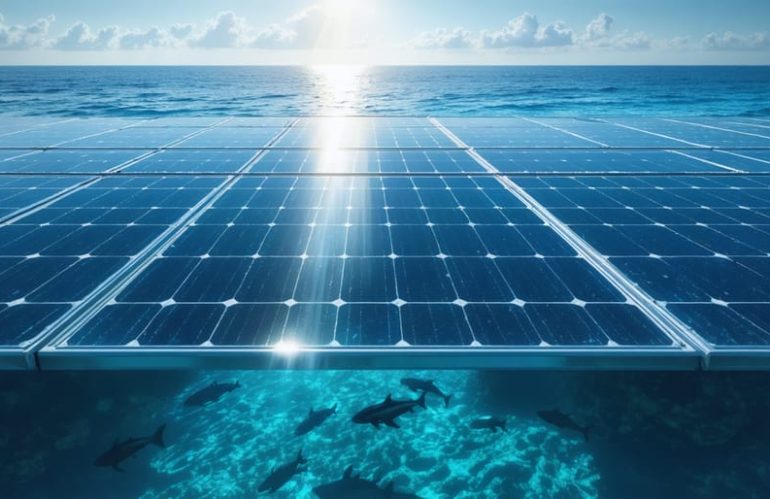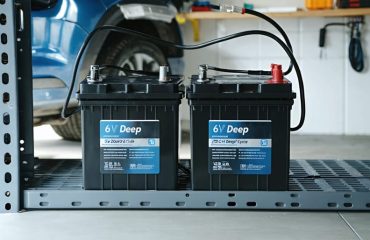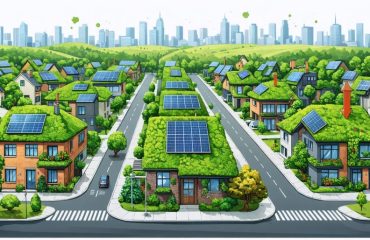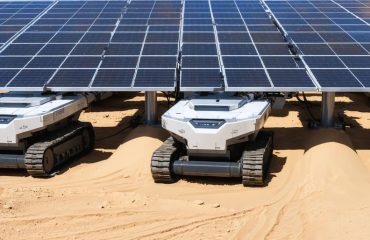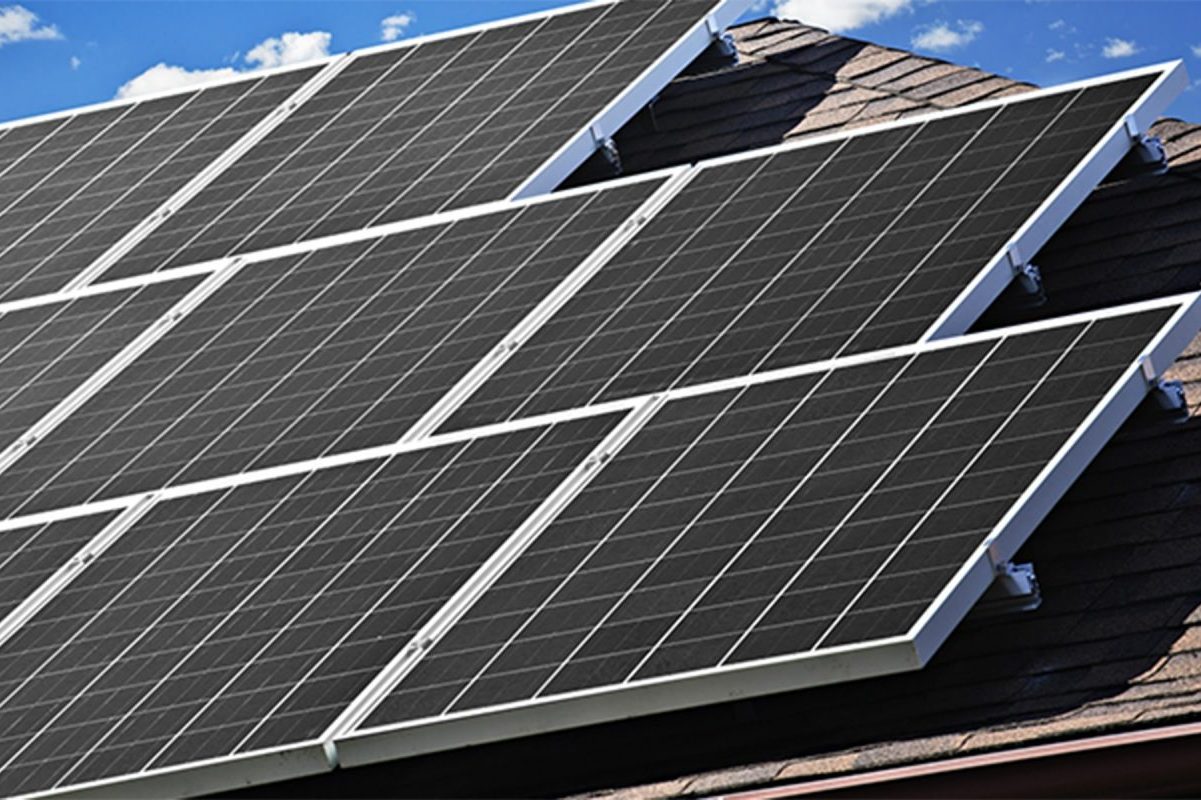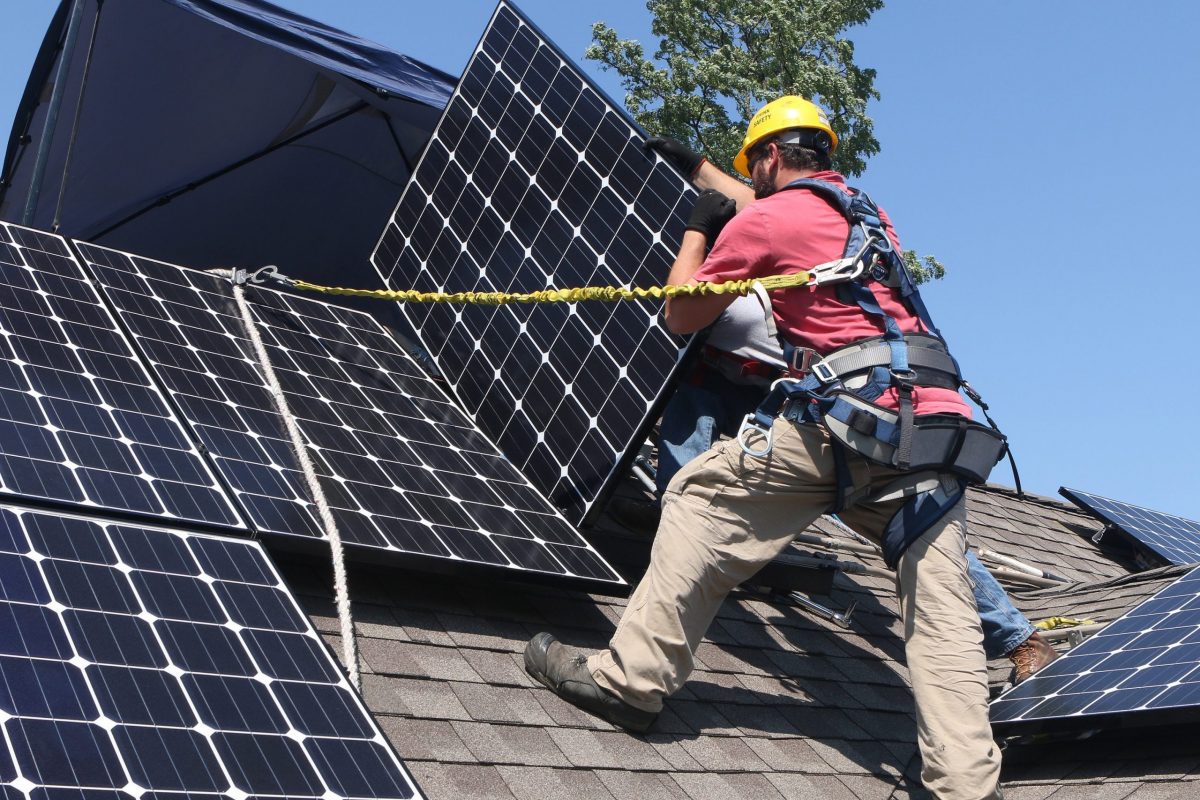Harness the untapped potential of marine solar energy to revolutionize coastal power generation while protecting our oceans. As coastal regions face growing energy demands and environmental challenges, floating solar arrays and marine-grade photovoltaic systems offer a groundbreaking solution that combines renewable energy with ocean conservation.
Marine solar technology transforms vast ocean surfaces into clean energy platforms, generating up to 15% more electricity than land-based systems due to the cooling effect of water and enhanced light reflection. These innovative installations not only power coastal communities but also shield marine ecosystems by reducing water evaporation and providing artificial habitats for marine life.
Recent advancements in corrosion-resistant materials and storm-proof designs have made marine solar installations increasingly viable for coastal properties. With specialized saltwater-resistant panels and floating mechanisms that adjust to wave motion, these systems deliver reliable power while withstanding harsh maritime conditions. For coastal homeowners and businesses, marine solar presents a unique opportunity to leverage natural resources, reduce energy costs, and contribute to ocean preservation.
This dual-purpose approach to renewable energy marks a significant milestone in sustainable coastal development, offering a practical path toward energy independence while safeguarding our marine environments for future generations.
Why Traditional Solar Panels Struggle in Marine Environments
Salt Spray and Corrosion Issues
Salt spray poses a unique challenge for solar installations in coastal areas, as the corrosive nature of salt air can impact both the panels and mounting hardware. When salt particles settle on solar equipment, they can gradually erode protective coatings and accelerate metal deterioration. This is particularly noticeable on connection points and mounting brackets, which can show signs of rust within just a few years if not properly protected.
However, modern marine-grade solar equipment is specifically designed to withstand these harsh conditions. High-quality panels now feature specialized glass coatings that resist salt buildup and make cleaning easier. Additionally, mounting systems made from marine-grade aluminum or stainless steel offer excellent protection against salt-induced corrosion.
Regular maintenance becomes especially important in coastal environments. A simple freshwater rinse every few months can prevent salt accumulation and extend the life of your solar installation. While marine-grade equipment may cost slightly more upfront, the long-term savings in maintenance and replacement costs make it a smart investment for coastal properties. With proper materials and care, your marine solar system can perform efficiently for decades, even in salt-rich environments.
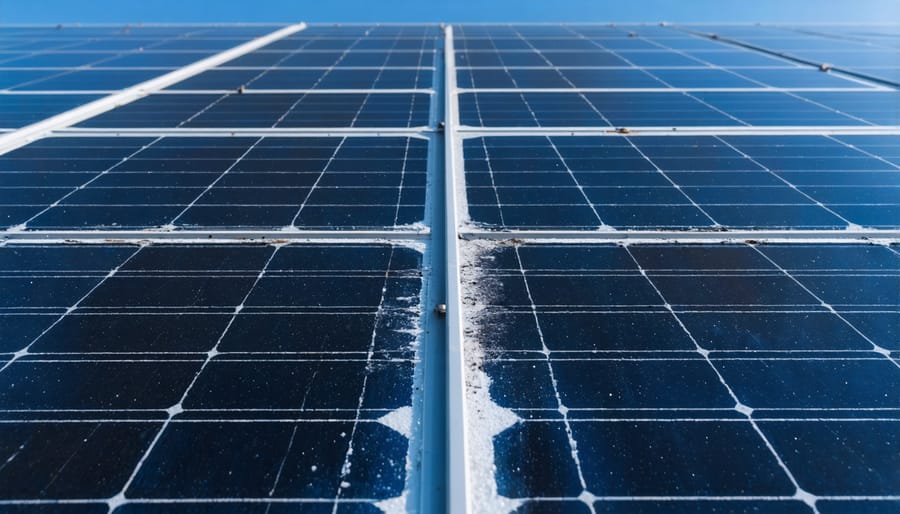
High Humidity and Temperature Fluctuations
Marine environments present unique challenges for solar panels due to the constant exposure to high humidity and temperature variations. The combination of salty air and fluctuating temperatures can affect solar panel performance, but modern marine-grade panels are specifically designed to handle these conditions.
When humidity levels are high, water droplets can form on panel surfaces, potentially reducing light absorption. However, advanced hydrophobic coatings help water bead up and roll off easily, maintaining optimal efficiency. These coatings also prevent salt and mineral deposits from building up, ensuring consistent performance even in the most demanding coastal conditions.
Temperature swings between hot days and cool nights can impact solar panel efficiency, as panels generally perform better in cooler temperatures. The good news is that marine solar panels are engineered with temperature-resistant materials and superior heat dissipation properties. Many modern installations include automated tracking systems that adjust panel positioning throughout the day, helping to maintain stable temperatures and maximize energy production despite weather fluctuations.
Regular maintenance and proper installation by experienced professionals ensure these environmental challenges don’t significantly impact your system’s long-term performance or lifespan.
Marine-Grade Solar Solutions That Last
Corrosion-Resistant Panel Technologies
Marine solar panels require special engineering to withstand the harsh coastal environment. These advanced panels feature multiple protective layers designed specifically to combat salt spray, high humidity, and extreme weather conditions. The most effective marine solar technologies use a combination of specialized glass coatings, robust frame materials, and enhanced sealing techniques.
Most marine-grade panels incorporate tempered glass with anti-reflective and hydrophobic properties, helping water and salt slide off easily while maximizing light absorption. The frames are typically constructed from high-grade aluminum or stainless steel that’s been anodized or treated with marine-grade powder coating to prevent rust and corrosion.
Junction boxes and electrical connections receive extra attention in marine solar designs, featuring IP68-rated waterproof enclosures and marine-grade cables with additional UV protection. Some manufacturers also include innovative self-cleaning surfaces that use nano-coating technology to reduce salt and debris buildup.
Recent developments have introduced new composite materials that offer superior corrosion resistance while remaining lightweight. These panels often feature double-wall construction and specialized edge sealing to prevent moisture intrusion. Some advanced models even incorporate sacrificial anodes, similar to those used in boat protection, to provide an extra layer of corrosion prevention.
The best marine solar panels now offer warranties specifically designed for coastal environments, typically guaranteeing performance for 15-25 years even under challenging seaside conditions.
Advanced Mounting Systems for Coastal Homes
Coastal homes require specially designed mounting systems that can withstand the unique challenges of marine environments. These advanced mounting solutions combine durability with innovative engineering to protect your solar investment from salt spray, high winds, and corrosive conditions.
The most effective mounting systems for coastal applications feature marine-grade stainless steel or aluminum components, which resist rust and deterioration. These materials are typically treated with additional protective coatings that provide an extra barrier against salt air and moisture. Many homeowners opt for adjustable racking systems that can be fine-tuned to maximize sun exposure throughout the year while maintaining structural integrity during storms.
Ballasted mounting systems have gained popularity in coastal areas because they don’t require roof penetration, reducing the risk of water damage. These systems use weight distribution to secure panels, making them ideal for flat or low-slope roofs. For pitched roofs, specialized flash mounts with enhanced weather sealing protect against water intrusion while ensuring a secure attachment.
To combat high winds, aerodynamic mounting designs help reduce uplift forces on solar panels. These systems often incorporate wind deflectors and reinforced connection points that exceed standard installation requirements. Some advanced systems even feature smart monitoring capabilities that can adjust panel angles during extreme weather events, providing additional protection for your investment.
Regular inspection and maintenance of mounting hardware ensure long-term reliability, making these specialized systems a worthwhile investment for coastal homeowners.
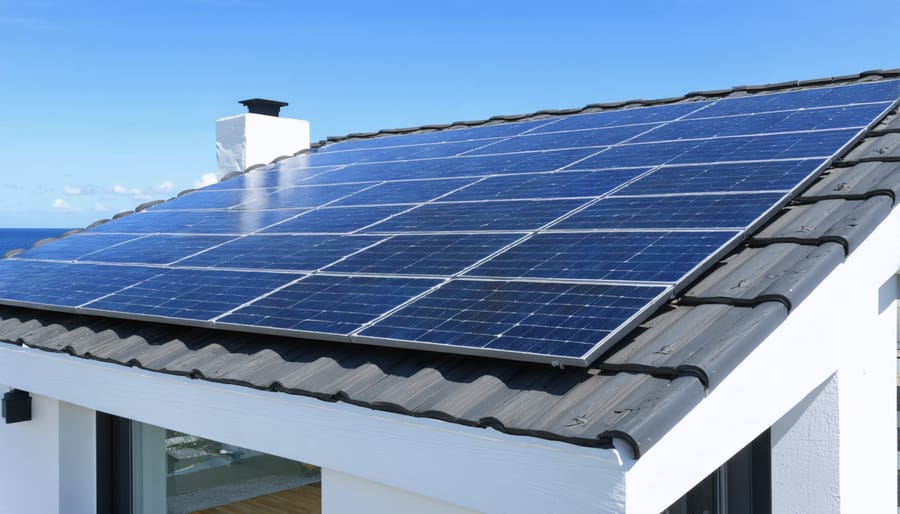
Marine-Grade Wiring and Components
When installing solar systems in marine environments, using the right electrical components is crucial for long-term success. Marine-grade wiring and components are specifically designed to withstand the harsh conditions of saltwater exposure and high humidity that can quickly deteriorate standard electrical equipment.
The backbone of any marine solar installation is tinned copper wiring, which features a protective coating that prevents corrosion and extends the life of your system. These specialized cables come with robust insulation that resists UV damage and maintains flexibility even in extreme temperatures.
All connection points should use waterproof marine-grade connectors and junction boxes rated IP67 or higher, ensuring complete protection against water intrusion. Stainless steel mounting hardware, preferably grade 316 or better, provides superior resistance to rust and corrosion.
Battery terminals and bus bars should be protected with specialized marine-grade grease or protective sprays to prevent salt buildup and oxidation. Additionally, all electrical components should be housed in waterproof enclosures with proper ventilation to prevent moisture accumulation while allowing heat dissipation.
While marine-grade components may cost more initially, they’re a wise investment that prevents frequent replacements and system failures. Regular inspection of these components, combined with proper maintenance, will ensure your marine solar system operates reliably for years to come, even in the most challenging coastal environments.
Real Performance Benefits in Coastal Areas
Energy Production in Marine Conditions
Marine solar installations typically generate 10-15% less energy compared to land-based systems due to environmental factors, but recent technological advances have significantly improved their efficiency. The combination of salt spray, high humidity, and varying temperatures creates unique challenges for solar panel performance optimization.
Despite these challenges, marine solar systems can still achieve impressive results. Modern marine-grade panels maintain approximately 85-90% of their rated capacity when properly maintained, with some high-end models reaching up to 95% efficiency in ideal conditions. The reflective properties of water can actually boost energy production through albedo effect, potentially increasing overall output by 5-10% during peak hours.
Temperature regulation plays a crucial role in marine environments. While cooler sea breezes can help maintain optimal operating temperatures, the constant exposure to moisture requires careful system design. Most marine solar installations incorporate advanced cooling systems and protective coatings that help maintain consistent performance throughout varying weather conditions.
Real-world data shows that a well-designed marine solar system can produce between 3.5 to 4.5 kilowatt-hours per day per installed kilowatt, depending on location and weather patterns. This output is sufficient to power essential boat equipment or contribute significantly to coastal home energy needs while reducing reliance on traditional power sources.
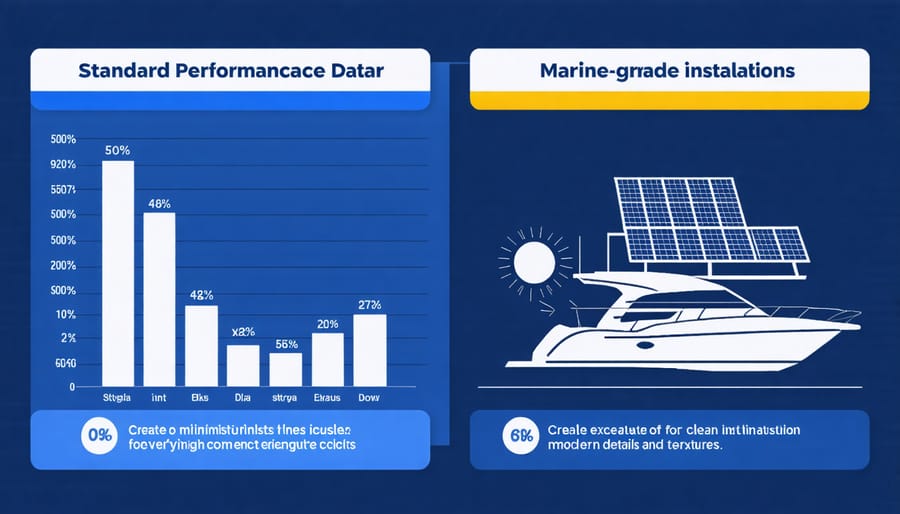
Long-term Cost Benefits
While marine-grade solar installations may require a higher initial investment, their long-term financial benefits often surpass those of standard solar systems. When calculating the solar energy return on investment, marine solar systems typically show impressive results due to their exceptional durability and enhanced performance capabilities.
These specialized systems are built to withstand harsh coastal conditions, resulting in fewer repairs and replacements over time. Most marine-grade panels maintain their efficiency for 25-30 years, compared to 20-25 years for standard installations. This extended lifespan, combined with minimal maintenance requirements, significantly reduces long-term operational costs.
Marine solar systems also tend to perform better in high-humidity environments, capturing more energy throughout the year. This increased efficiency translates to greater energy savings, with many homeowners reporting 15-20% higher energy production compared to conventional systems.
Insurance companies often offer better coverage rates for marine-grade installations due to their superior durability, further reducing annual costs. Additionally, these systems typically come with longer warranties, providing better protection for your investment.
When factoring in government incentives and rising electricity costs, most homeowners see complete return on investment within 5-7 years, after which the energy savings represent pure profit. The premium materials used in marine solar systems also tend to maintain higher resale values, adding to their long-term financial advantages.
Installation and Maintenance Considerations
Professional Installation Requirements
Installing marine solar systems requires specialized expertise due to the unique challenges of coastal environments. A professional solar installation team with marine experience understands the critical factors that affect system performance and longevity in saltwater conditions. These experts evaluate factors like mounting stability against strong winds, corrosion-resistant materials selection, and proper waterproofing techniques.
Certified marine solar installers conduct thorough site assessments to determine optimal panel placement, considering factors like salt spray exposure and shadow patterns from boat masts or nearby structures. They also ensure compliance with local marine regulations and electrical codes specific to waterfront properties.
Working with qualified professionals helps prevent common installation mistakes that could lead to system failure or safety hazards. Experienced installers use marine-grade components and specialized mounting solutions designed specifically for coastal applications. They also implement proper grounding systems to protect against lightning strikes and electrical surges common in marine environments.
Most manufacturers require professional installation to maintain warranty coverage, making expert installation not just recommended but essential for protecting your investment.
Maintenance Schedule for Coastal Systems
Regular solar system maintenance in coastal environments is crucial for optimal performance and longevity. Schedule quarterly inspections to check for salt buildup and corrosion on panels and mounting hardware. Clean panels monthly using fresh water and non-abrasive materials to remove salt spray and marine debris. Inspect seals and connections every six months, paying special attention to weather-resistant housing units.
During storm seasons, increase inspection frequency and ensure all mounting systems remain secure. Replace sacrificial anodes annually to protect metal components from accelerated corrosion in the marine environment. Have a professional technician perform comprehensive system checks annually, including electrical connections and inverter performance.
Document all maintenance activities and monitor system performance through your inverter’s tracking system. This helps identify potential issues early and maintains warranty compliance. Remember that coastal installations may require more frequent maintenance than inland systems, but this additional care ensures reliable performance and extends the system’s lifespan significantly.
Marine solar energy represents a powerful fusion of renewable technology and maritime innovation, offering a sustainable path forward for coastal communities and marine applications. By harnessing the sun’s energy in marine environments, we can significantly reduce our carbon footprint while ensuring a reliable power supply for various maritime needs. The benefits are clear: reduced operational costs, minimal environmental impact, and increased energy independence for coastal properties and marine vessels.
The technology has proven its worth through successful implementations worldwide, demonstrating impressive durability against harsh marine conditions while maintaining optimal performance. As climate change concerns grow and energy costs rise, marine solar solutions offer a practical and economically viable alternative to traditional power sources.
Now is the time to embrace this innovative technology. Whether you’re a homeowner in a coastal area, a marine business operator, or simply someone interested in sustainable energy solutions, marine solar power presents an opportunity to be part of the clean energy revolution. The initial investment is offset by long-term savings, while the environmental benefits contribute to a healthier planet for future generations.
Take the first step by consulting with marine solar specialists who can assess your specific needs and design a system that works for your situation. With advancing technology and increasing affordability, marine solar energy is no longer just an alternative – it’s becoming the smart choice for a sustainable maritime future.

